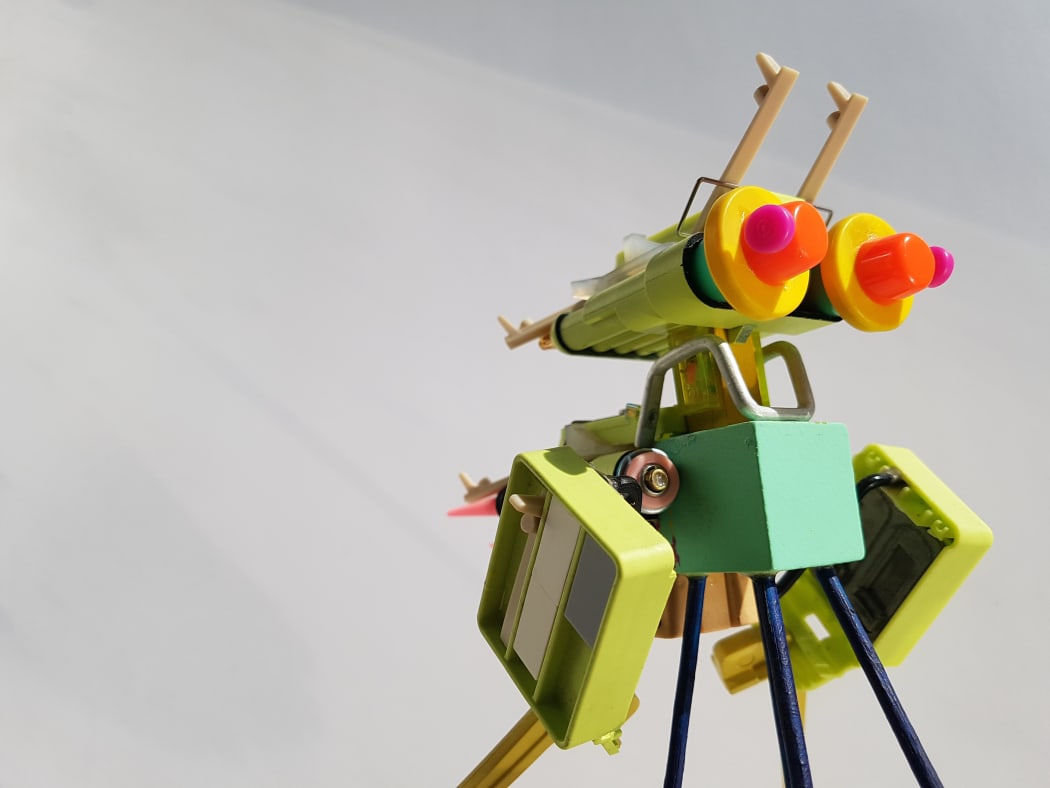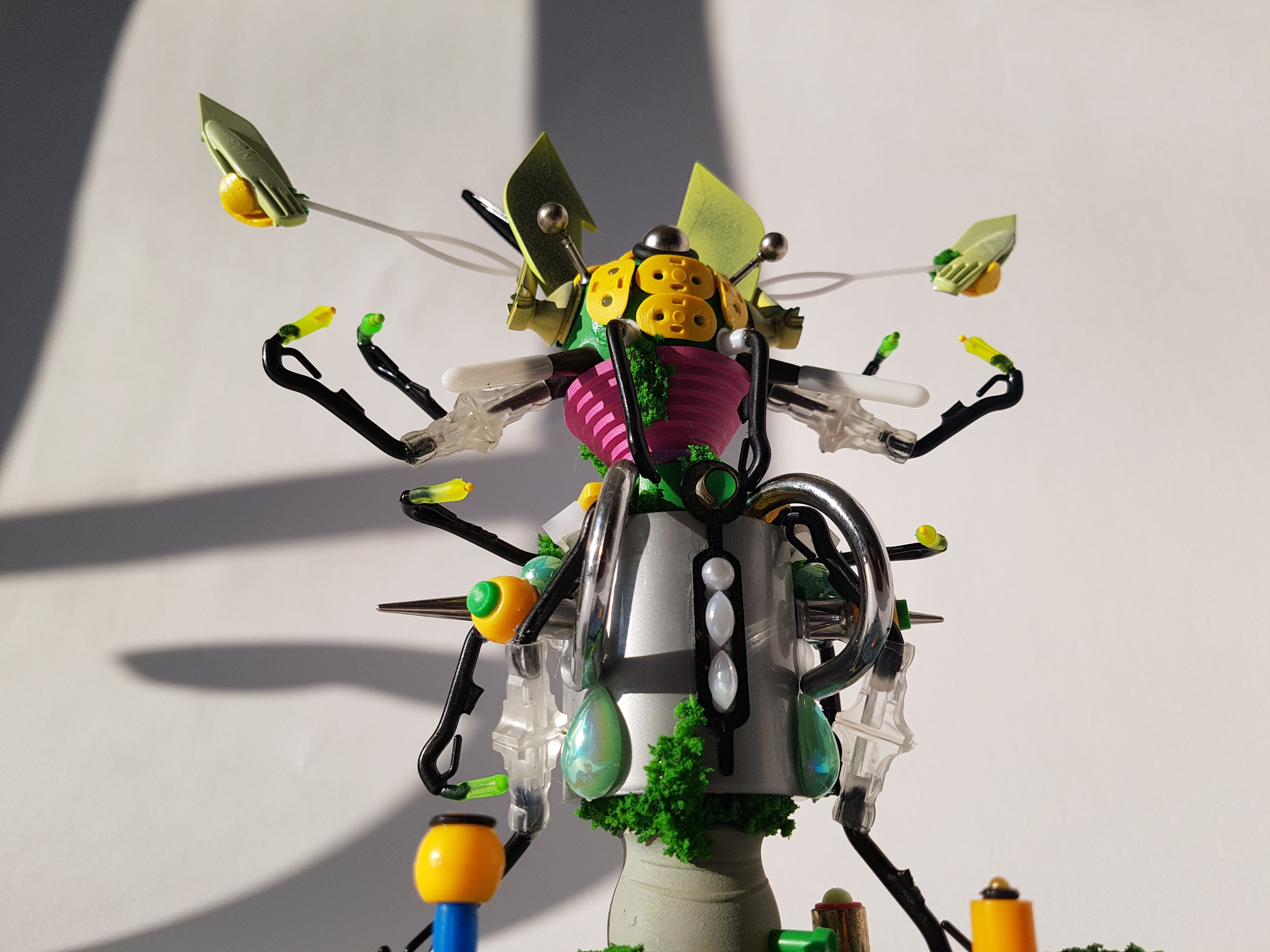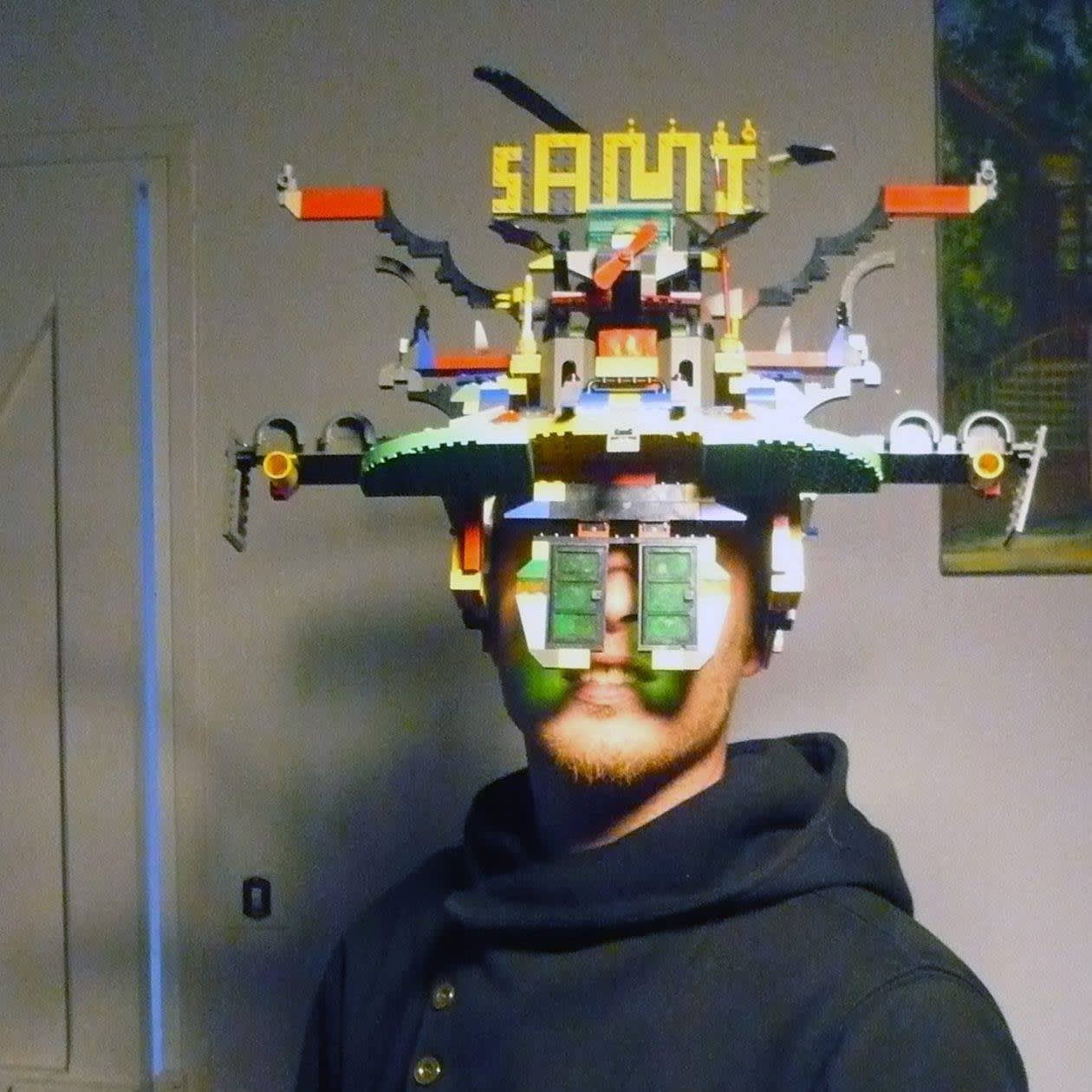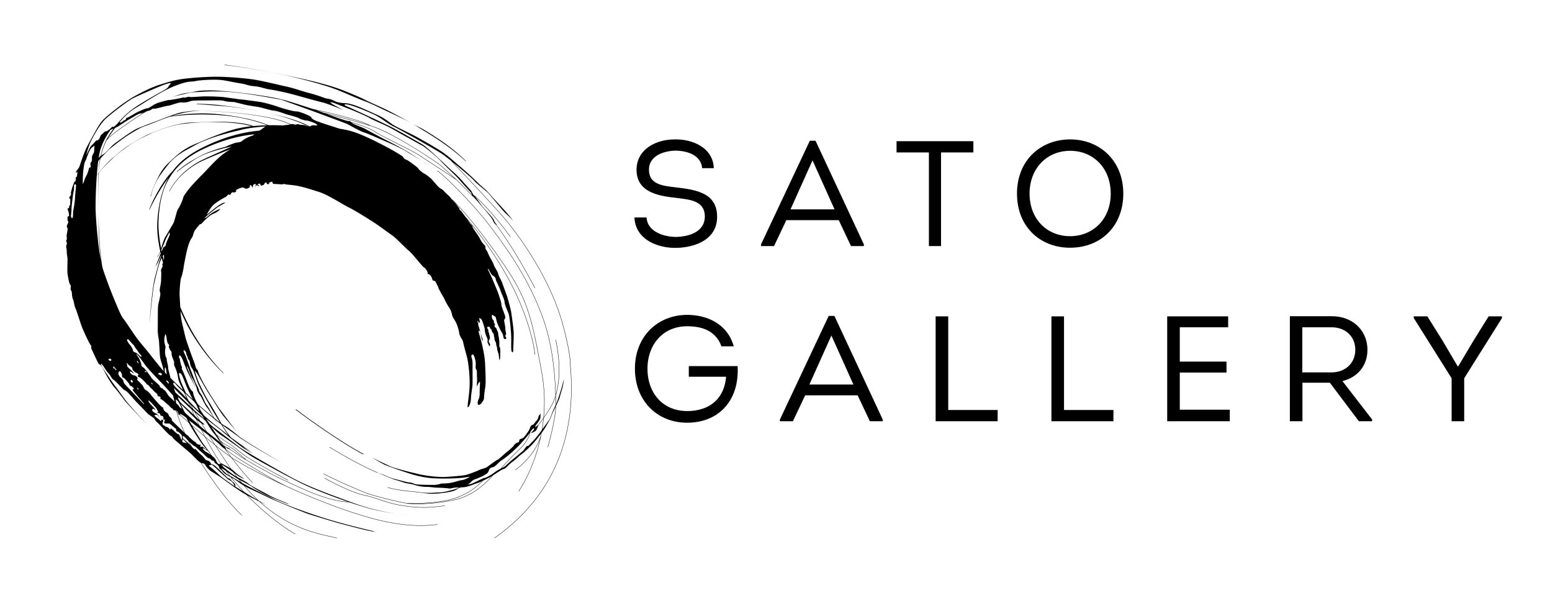
Interview by Charlotte van Zanten
Samy San (1986) – the Plasticien Paris – is a young French man and the first non-Japanese artist to join the gallery. Inspired by his many travels, but mostly, his fascination for Japan, his works derive from sci-fi, robotics and Japanese manga & animation.
As a kid, Samy San was always on the move. He lived in many different parts of France. When his parents divorced, those became two houses, in different areas.
When he was 20, he went to École supérieure art et design de Saint-Étienne, but he left the school at 24, just before graduating. He was feeling badly motivated and didn’t enjoy the vibe anymore. Instead, he packed his bags: he wanted to be on the move again.
For years Samy San travelled for 6 months, worked the other 6 months in France.
By the end of his 20s, while picking fruit at the end of the world, he realized the time had come to change something drastically. His hands were itching. He missed creating.
And then?
Back in France, I started working as a guardian for a 400 apartments building.
I had a tool kit to do electricity work around the apartment block and I had some plumbing gear. While watching the block, I started putting those two different types of tools together. The parts didn’t belong together, but that had always been something I felt attracked too. Even while attending art school, years before, I found ways to connect objects that didn’t belong.
With those tools, mixed with some forgotten and broken toys left in the sandbox, I created a first sculpture. It was actually a frame, for something else I had made. A drawing. But I realized the frame was far more interesting.

(Moussy, 2022)
Does connecting things that are not supposed to be connected, give you a feeling of power?
I don’t know.
Like you are controlling those objects?
Hehehe… well, maybe. I’m not very deep on the analytic side of my work, and I guess I have been doing the same thing for too long already. Maybe I don’t try to understand it anymore. But I did realize, I’m not crazy. Between what I am and what I do is no difference.
Between what I am and what I do is no difference.
What inspires you?
I practice art with all that is surrounding me. In that sense I admit I have been quite inspired by Arte Povera and the Fluxes Movement. I felt very inspired when I started reading about Joseph Buys. It made me realize how art is not always on paper, but it can be anything around you. It felt like a fit and it gave me freedom.
When you play with Lego, you use your fantasy. And that is what art had to be for me. You can make a car, but just as easily a robot.

(Brakino, 2022)
Does making art out of life surrounding you feel more sincere than studying art in art school?
I’m not sure, because I cannot say we do not learn anything in school. There are many teachers out there who try to push you out of your comfort zone, and change your way of thinking. Most of the time people that come to art school think they are genius and do not need any of it. I had a teacher who was besides working in art school, doing a lot for the city, the local museums. In his private life, he was a complete punk. Provoking people, completely out of the common context. Nothing mainstream. People like that can free your mind.
Most of your work – from what I’ve seen – seems quite figurative. I’d even say: they are robots. Am I right?
Absolutely. Like mentioned before: practicing art, I think, is doing what you like. And me: I love science fiction. When playing with Lego, I was not doing pirates or medieval stuff: I was making spaceships. When I turned into a teenager, I realized the world of science fiction was becoming a reality. Internet appeared, and lots of new technologies.
As an artist, I feel I should be documenting the time. It is anticipation science.
Isn’t it strange that everyone is scared of robots? When you think of it: what if it just all works out fine? What if we don’t have to be afraid of what robots will bring us? It could be just fine!
My family works in pharmaceutical industry, and when I see what is happening: it’s amazing. Nano robots are already being injected into bodies to correct cells.

(Bunka, 2022)
Where do you get the materials you use?
I use a lot of plastic, because it’s not heavy and easy to combine. And of course wood, glue, iron.
I go to the brocante [Ed: French flea market] usually. I can find a box of playmobile or Lego, for nothing. Ten years of work in a box.
But the best part, is that people in my neighborhood know what I am doing and they give me stuff they don’t use anymore. People hang bags with old toys on my doorpost. Family, friends, people around me all contribute to my art. I think it’s very poetic and it’s a beautiful cycle. By recycling products that would otherwise turn to waste, I can do my part.
One of my own great ecological achievements, is that I found a way to recycle spray foam. By using a chemical product, I can reuse foam that I find in the trash. It becomes liquid again, like gum. I give it a color and I use it for my works.
I added a rule for myself 2 years ago. I told myself that in my work I have to combine organic, vegetable related materials and mix those with mechanics.
People hang bags with old toys on my doorpost. Family, friends, people around me all contribute to my art. I think it’s very poetic and it’s a beautiful cycle.
You use organic materials?
Well, it looks like it. I tried it with real, alive materials, but that became very messy. Disgusting even.
About colors: to me that is one of your strongest points. Every work looks perfectly color coordinated.
Maybe color is my natural advantage. I have a good visual memory and it’s almost as if I remember in colors. I recall color pallets, of animated series like Dragonball Z and other famous manga. Besides, aesthetics is very important for me. The fact that there have been movements rejecting beauty is something I really don’t believe in. Saying beauty is ‘just a concept’? No I don’t think so…

(Aldorande, 2022)
Do you initially make a work with a palette on your mind?
No, no. Generally not, but it happens. Once I made two small sculptures. For one I used random colors, and for the other one I used a color pallet of UFO Robot Grendizer. I asked my friend – who is a bit older and who grew up with this animation – which one he liked best. And he pointed out de Grendizer and said: this one. Although I don’t know why, it makes me very nostalgic. The sculptures didn’t resemble robots. It was only the colors.
I have another rule for myself: I have to bring something unique, something intimate and something precious. That is the way I would like to perceive art myself. Using colours is one way to do that.
What is your relationship to Japan?
When I was a kid I lived close to China town in Paris. In my class I was the only white guy. There were Chinese, Indian, African and Japanese kids. Those Japanese kids were my friends.
Years later, when I went to Japan I recognized all their toys. It was like a dream being in Akihabara. And it was exactly as I thought. It was kawaii, cute, and little precious stuff. I want my work to have that kind of effect and in Japan they naturally respond that way. And they have a whole district of toys! It’s just so fascinating. I’m sure you understand.
And of course there is all the manga and animation I grew up with...

(Portrait of the artist)

